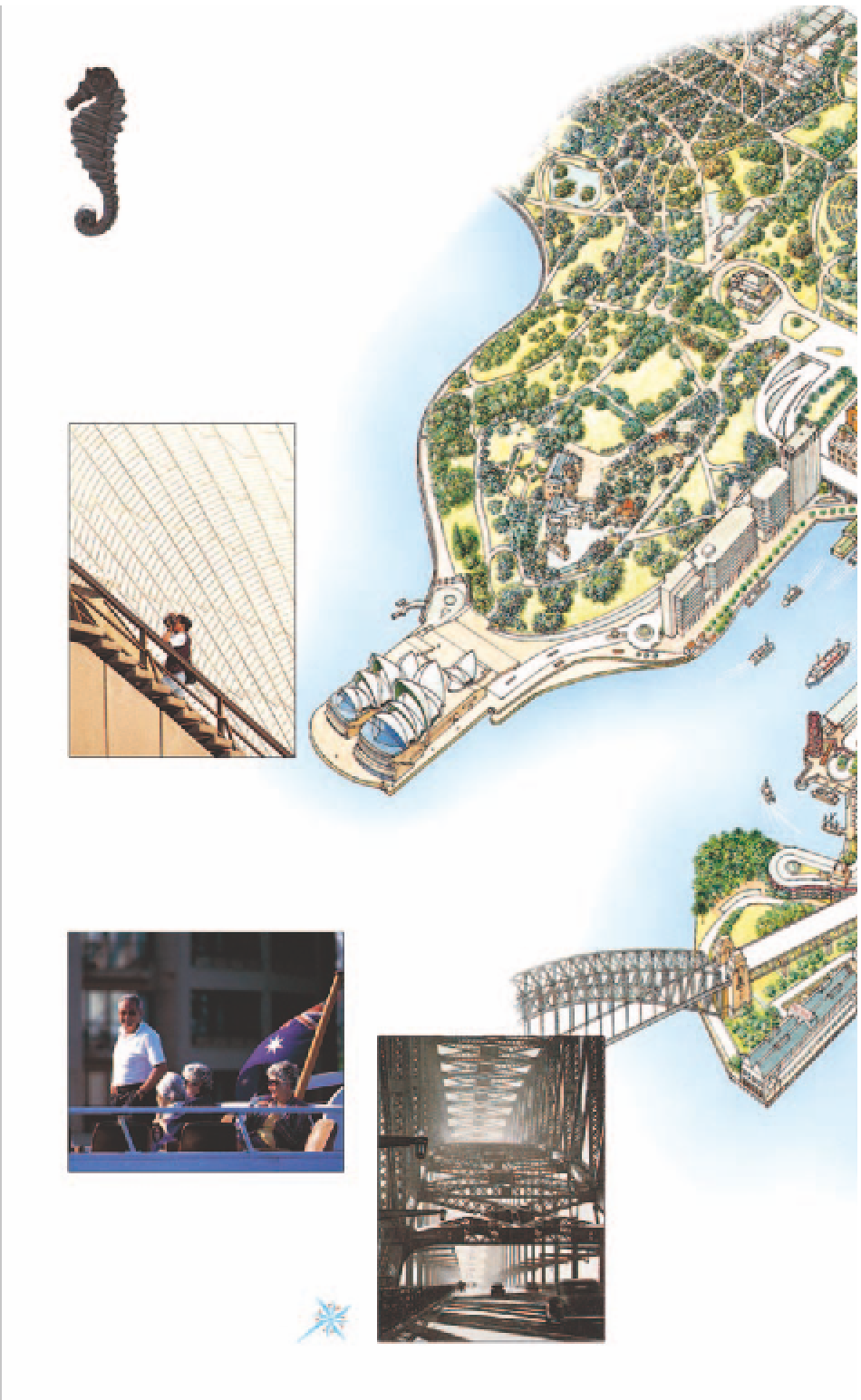Travel Reference
In-Depth Information
Sydney Cove to Walsh Bay
Conservatorium
of Music
It is estimated that over 70 km (43 miles)
of harbour foreshore have been lost as a
result of the massive land reclamation pro-
jects carried out since the 1840s. That the
13 islands existing when the First Fleet
arrived in 1788 have now been reduced to
just eight is a startling indication of rapid
and profound geographical transformation.
Redevelopments around the Circular Quay
and Walsh Bay area from the 1980s have
opened up the waterfront for public use
and enjoyment, acknowledging it as the city's
greatest natural asset. Sydney's environmental
and architectural aspirations recognize the
need to integrate city and harbour.
Detail from
railing at
Circular Quay
1857 Man
O'War Steps
The Sydney Opera House
was
designed to take advantage of its
spectacular setting. The roofs
shine during the day and seem
to glow at night. The building
can appear as a visionary land-
scape to the pedestrian onlooker.
Government House
,
a Gothic Revival building,
was home to the state's
governors until 1996
The Sydney Harbour
Bridge
was also known
as the “Iron Lung” at the
time of its construction.
During the Great Depres-
sion it provided on-site
work for approximately
1,400, while many more
were employed in the
specialist workshops.
Harbour cruises
regularly depart
from Circular Quay, taking visitors out
and about both during the day and in
the evening. They are an incomparable
way to see the city and its waterways.
0 metres
250
0 yards
250













































